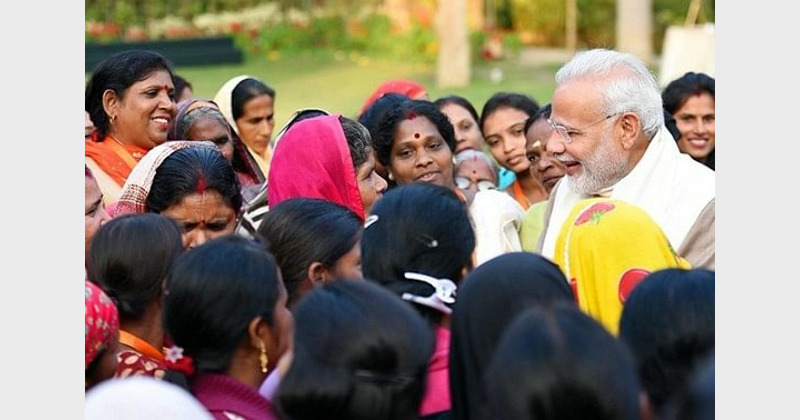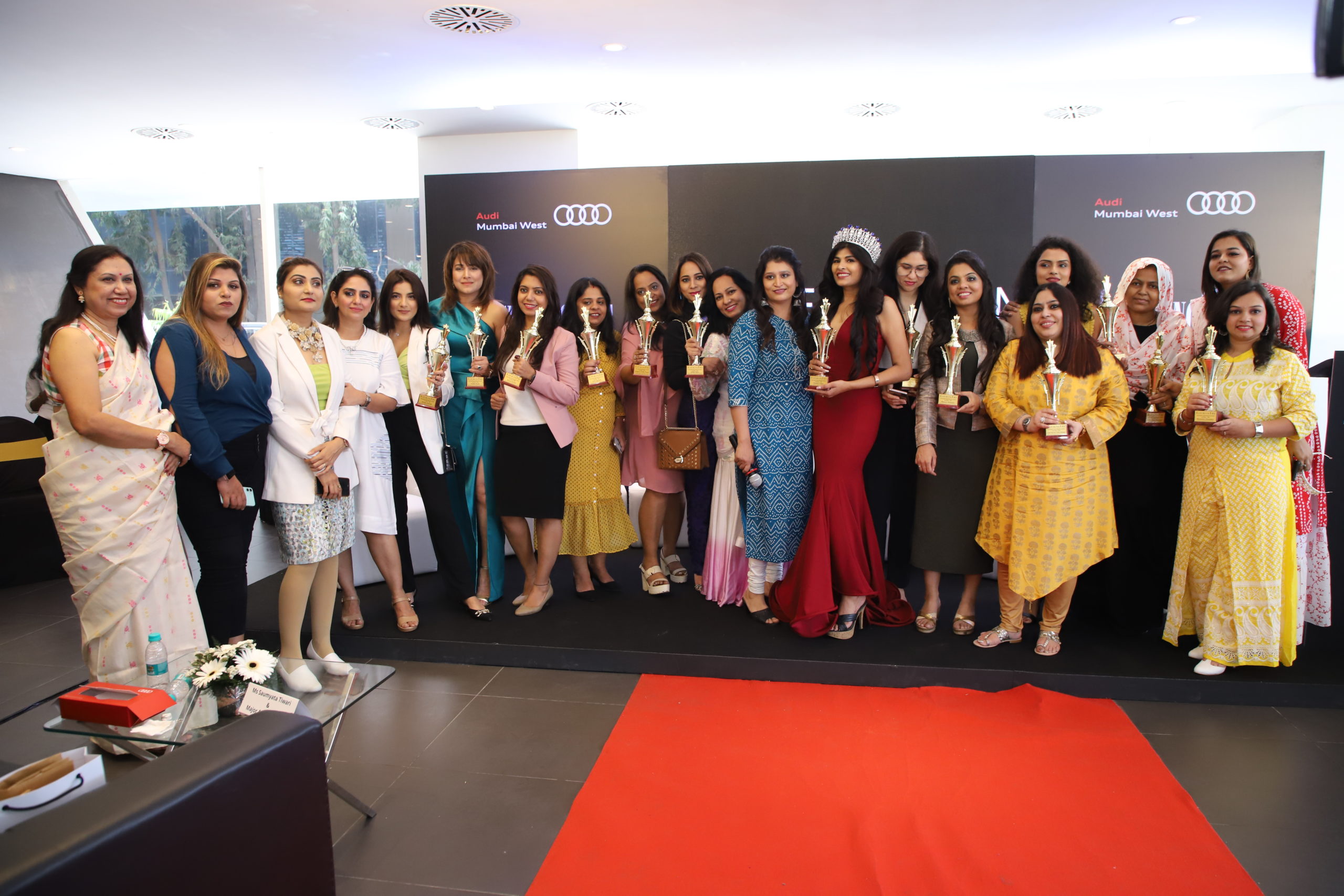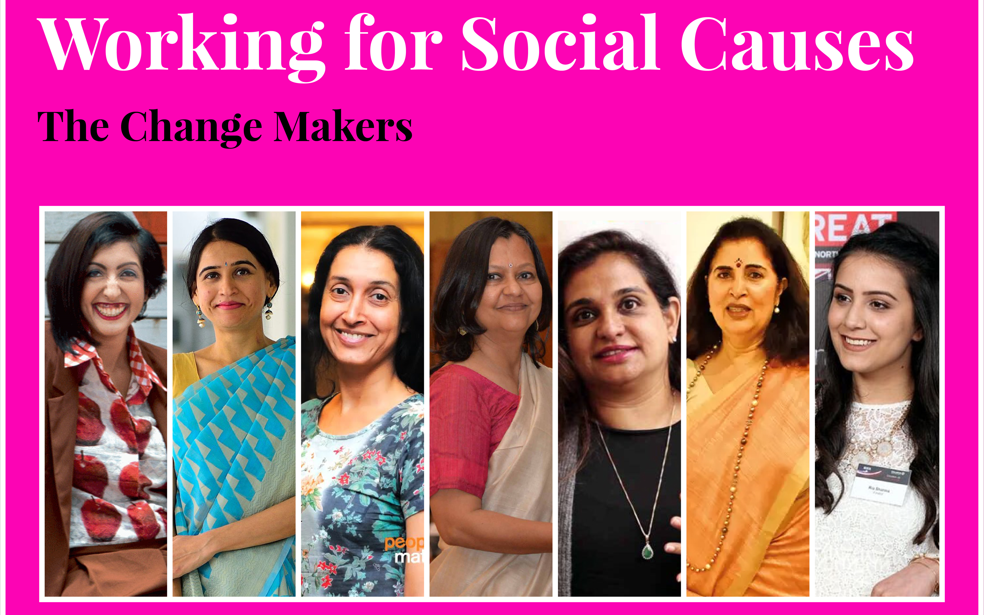
Celebrating 72nd Birthday of PM Narendra Modi Ji!
His Initiatives to empower women are indeed commendable!
“Our Vedas and tradition have given a call that women should be able and capable to give direction to the nation” – PM Narendra Modi
The life of women, especially in remote villages, was once characterized by multiple daily hardships, even to fulfil their own needs and those of their families. However, under the Modi government, efforts were made to improve each aspect of their lives.
Ujjwala Yojana
Women who live in poor and rural homes were often forced to inhale toxic fumes from cooking fires. These fumes could affect their health and even harm their children. They would then need to spend time gathering firewood, which was hard work in itself.
The Pradhan Mantary Ujjwala Yoanna (PMUY) scheme, which was launched by Prime Minister Narendra Modi, has already reached its target of distributing eight crores of LPG cylinders to poor families. Now, it has added another one crore to reach nine crores.

The main reason for providing clean LPG was so that people could control indoor air pollution by using cleaner fuel than coal or oil. Cooking with clean fuels has helped women improve their quality of life and take them out of smokey, polluted environments, giving them cleaner, healthier environments to be in and extra free hours they could use for other things they couldn’t before.
Jal Jeevan Mission
Water is an essential part of our lives. It is especially important in households where there are no proper facilities for drinking water. The Indian Government has launched a program called ‘Jal Jeevan Mission’ which aims at providing access to safe drinking water to every household in the country.
Rural and urban households alike were forced to walk long distances to fetch drinking and cooking supplies from distant sources. Even though India has achieved independence seven decades ago, only 17 percent of rural households have access to tap drinking and cooking facilities.
Jal Jeevan mission was launched in 2019. It has helped provide safe drinking waters for over 50% of Indian households. Over 8.8 lakh schools and 8.89 lakh anganwadi centers in rural India now have easy and affordable means to get their daily potable water needs met.
Beti Bachao Beti Padhao
“Let us celebrate the birth of the girl child. We should be equally proud of our daughters.” -PM Narendra Modi
The scheme was launched after the national census results for 2011 revealed detraction in key gender metrics – Child Sex Ratio (CSR) and Sex Ratio at Birth (SRB). CSR is defined as the number of girls per 1,000 boys aged 0-6 years. This ratio has showcased a steady decline, from 945 in 1999 to 927 in 2001. This declined further to 918 girls for every 1,000 boys in 2011. Detailed evaluation of the decline showed that SRB was the principal factor.
Dip in these ratios is a significant indicator of gender discrimination and women disempowerment, reflecting both pre-birth discrimination through gender-biased, sex selective abortion and post-birth discrimination by neglecting health, nutrition, and educational needs of the girl child. Research concluded that the strong socio-cultural and religious preference for boys was the root cause of the problem and this provided impetus for the launch of the BBBP initiative.
Since the launch of Beti Bachao Beti Padhao , the multi-sectoral District Action Plans have been operationalized in almost all states. Capacity-building programmes and Trainings have been imparted to Trainers to further strengthen capacities of district level officials and frontline workers. Nine sets of such training have been organized covering all States/UTs the Ministry of Women & Child Development from April-October, 2015.
Stand Up India Scheme
The Stand up India scheme aims at promoting entrepreneurship among women and scheduled castes and tribes. The scheme is anchored by the Department of Financial Services (DFS), Ministry of Finance, Government of India.

Stand-Up India Scheme facilitates bank loans between Rs 10 lakh and Rs 1 Crore to at least one Scheduled Caste (SC) or Scheduled Tribe (ST) borrower and at least one woman borrower per bank branch for setting up a greenfield enterprise. This enterprise may be in manufacturing, services or the trading sector. In case of non-individual enterprises at least 51% of the shareholding and controlling stake should be held by either an SC/ST or woman entrepreneur.
Women in security forces
Now, Sainik schools also started the female admissions with the goal of giving equal opportunity to females in the Indian armed forces.

The Modi government had made an important announcement about the induction of female officers in the Indian Armed Forces through NDA (National Defense Academy). In a historic move, the government decided to open the door for female officers to enter the prestigious academy. This would mean that they can one day command troops, lead ships and fly fighter planes. The decision came after decades of struggle and protests by activists who wanted to see equal opportunities for both men and women in military services.
Three women fighters were inducted into combat positions in the Indian Air Force for the first time in its entire existence in 2018. India also witnessed the first female air force officer representing the country at the Republic Day parade in 2021.
Since 2015, the government has allowed the appointment of female officers in non-Gazetted posts in seven union territories (UT) and central armed forces (CAF). Reservation for females in these services has increased almost doubled in the last eight years.
Meanwhile, the Central Reserves Police (CRPF) has raised three new female battalions since 2014-2015 and also inducts women personnel into its special forces commando CoBRA. India has also gotten its first all-female commando unit recently.
Women in STEM
The Government has encouraged female scientists by providing them with opportunities to pursue their research in different fields. The Knowledge Involvements in Research Advancement through nurturing (KIRAN) programme offers financial assistance to unemployed female scientists and technologists, particularly those who had a break from their careers, for undertaking research in frontiers of scientific and technological advancement. The mobility scheme under KIRAN supports relocations of working female scientists and technologists for two to five years.
In India, there are many female engineers who have excelled in their respective fields. They have also contributed significantly towards the development of our country.
Women parliamentarians
In the 17th Lok Sabha, the highest number of women parliamentarians were seen (78) in comparison to 64 MPs in the previous election. 11 women are currently serving in the Union Council of Ministers, the highest number in nearly two decades! The increasing number of women in political leadership roles brings women to the forefront of policy making, which in turn sets examples and role models, encouraging more women to aspire for leadership roles. — Reference Data The Print
Such achievements in various sectors across the country have given rise to new possibilities for Indian girls and young ladies, who now have greater opportunities than ever before.



